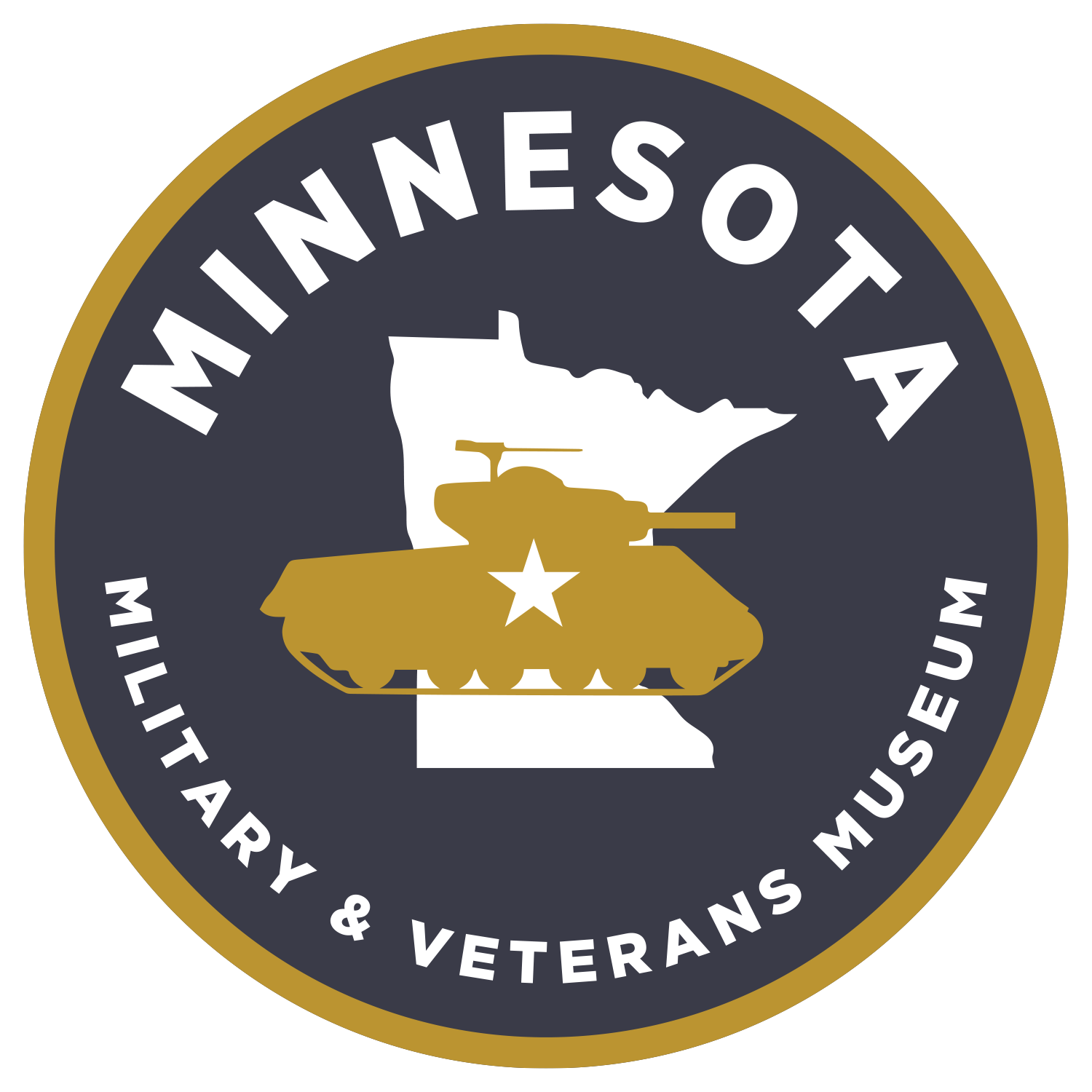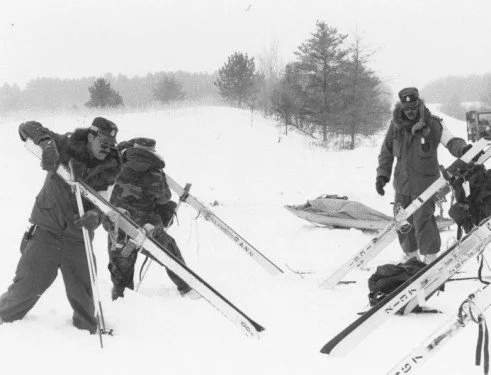About Camp Ripley
Camp Ripley is a state-owned 53,000 acre military training center located on the Mississippi River just north of Little Falls. While primarily a National Guard facility, it provides year-round training for all military service branches and components. In recent years, Minnesota state agencies such as the Department of Natural Resources, Department of Transportation, and Minnesota State Patrol have also come to rely on Camp Ripley’s exceptional facilities for their education and training needs. Community interests across the spectrum of Minnesota life utilize Camp Ripley for its resources, expertise, and commitment to environmental stewardship.
It was opened to troops in 1931 after an exhaustive search for a Minnesota National Guard training site that was centrally located and well suited for tactical maneuvers. By happy coincidence, the chosen site encompassed the greater part of what had once been old Fort Ripley, a frontier Army post occupied from 1849-1877, and the new post took its name from the old.
Brief History of Camp Ripley
Camp Ripley is a 53,000-acre, state-owned military reservation in central Minnesota. It is managed by the Minnesota Department of Military Affairs and serves as the primary field training site for the Minnesota Army National Guard.
Location
The location of Camp Ripley was selected in 1929 by Minnesota’s Adjutant General, Ellard Walsh, who had been seeking a suitable replacement for Camp Lakeview, the Guard's small, outmoded 200-acre training camp on Lake Pepin near Lake City. In use since 1888, Camp Lakeview was lovely but totally inadequate for the needs of a twentieth century army. With help from state Senator Christian Rosenmeier of Little Falls, Walsh finally identified a large tract of forest and open land located seven miles north of Little Falls along the west bank of the upper Mississippi River. By coincidence, the acreage incorporated the remains of Fort Ripley, a frontier army garrison from 1849- 1877, and Camp Ripley took its name from the old fort.
The initial land area covered 12,000 acres. Additional acreage was acquired over the next 30 years, bringing the reservation to its present size of 53,000 acres. The terrain, including lakes and the river, is well suited for woodland-style tactical and weapons training. The reservation is 18 miles long (north to south) and seven miles wide.
Early Construction
Construction of buildings, utilities, field ranges, and roads began in 1930. By June 1931, when the first troops arrived for training, the cantonment area included a water tower, headquarters building, maintenance building, supply warehouse, and six company-size mess halls. It marked the beginning of a steady progression of construction. By 1940, the post was capable of housing 12,000 troops at one time. One of Camp Ripley's most recognizable features, the skillfully crafted 40-foot black granite entrance towers, flanking gateposts, and thick walls marking the cantonment area's main gate and south boundary, was built under the auspices of the Works Project Administration (WPA).
Begun in 1934, the entire project took eight years to complete. The 3,400-foot wall, punctuated by octagonal turrets, was laid dry, hand-placed without mortar. WPA workers did nearly all the construction on post between 1934 and 1942.
Main Gate
Main Gate
Other unusual construction during this time included the building known as Nelson Hall. Once the camp headquarters and officers billet, it is today used by the Minnesota Department of Natural Resources. The interior contains beautiful maple and birch
paneling salvaged from the old state capitol building before that building was demolished in 1940. Also salvaged from the old capitol was a large stained glass window that was eventually incorporated into the Chapel, completed in 1971. "Valhalla," an authentic Norwegian-style log chalet, was built in a secluded pine grove in 1934 as a hideaway for Minnesota's governors and visiting VIPs. In 1961, Gov. Elmer L. Anderson coined it as “Valhalla,” after the great hall of Odin in Norse mythology, and the name stuck. Development of field training areas has been continuous since the post opened. Many were developed in the 1950s and 60s as the camp expanded northward. There are numerous firing and gunnery ranges, ample space for tactical maneuvers, specialized training areas for combat readiness skills, 6,000 feet of railhead, and more than 250 miles of trails and roads.
World War Two
Tent city in 1940. Most troops still used tents until the mid-60s.
The post has always been important to the US Army. Large-scale Army maneuvers involving Regular Army and National Guard troops from several states were conducted here in 1937 and 1940. During World War II, the federal government took over Camp Ripley for use as an installation of the Army Service Forces, Seventh Service Command. From July 1942 to October 1943, thousands of federal troops received basic and advanced training here. Many were assigned to the 960th Air Base Security Battalion or to one of the dozens of Military Police (Aviation) Training Companies. The 99th Infantry Battalion (Sep), consisting of Norwegian-Americans, was activated at Camp Ripley in August 1942 and grew to 700 men by the time it transferred that fall to Fort Snelling and then to Camp Hale, Colorado, to complete training. There was a band (the 394th Army Air Force Band), and in the summer of 1943 Camp Ripley was home to the 173rd Station Hospital. Its 250-bed tent hospital was the only one of this kind in the nation. About 1,000 Soldiers were housed on post over the winter of 1942-43, and the numbers grew to over 7,000 the following summer when a Military Police (Aviation) Training Center was activated. Camp Ripley had been built in the 1930s as a summer training camp, however, and was poorly equipped for the cold and snow of a northern Minnesota winter. The Army, not wishing to
contend with the difficulties caused by its first winter at Camp Ripley, decided in late summer 1943 to discontinue use of the post for wartime training. Nearly all federal troops were transferred out in October 1943 and that winter the post was returned to state control.
Later Construction
Winter training in the 1970s
Tent city in 1940. Most troops still used tents until the mid-60s.
Summer troops in the early years lived and slept under canvas. Tents were gradually replaced by corrugated aluminum "hutments" (the troops referred to them as tin huts) in the 1960s. In the 70s, heated year-round barracks began to be built to accommodate cold weather training. A vigorous building and renovation effort has been steadily underway
ever since, changing Camp Ripley from a summer annual training site for the Minnesota National Guard to a state-of-the-art, year-round military training and education installation for all branches of service, as well as law enforcement personnel. Construction in the 1980s and 90s was especially heavy, including a 98,700-square foot Post Headquarters/Training Community Center; 62,000-square foot Troop Issue
Subsistence Activity (TISA) for food distribution and storage; major improvements to the post’s two aircraft runways; a regional maintenance training building; a huge Mobilization and Training Equipment Site (MATES) complex providing organizational maintenance for 900 tracked and wheeled vehicles; a 31,000-square foot Education Center containing 20 classrooms; and a fully equipped center for medical training and care.
Winter training in the 1970s
The post also has a long-standing, award-winning environmental research, management, and education program.
—Jack K. Johnson, 2001




